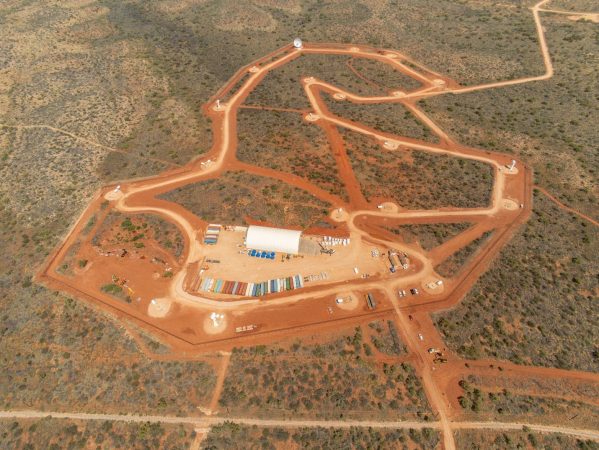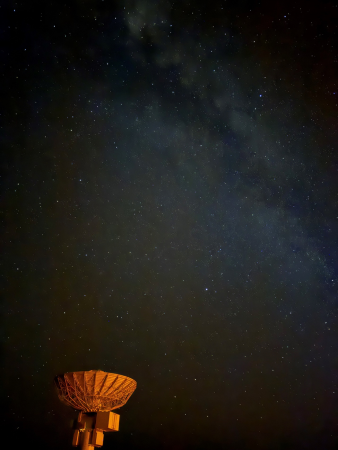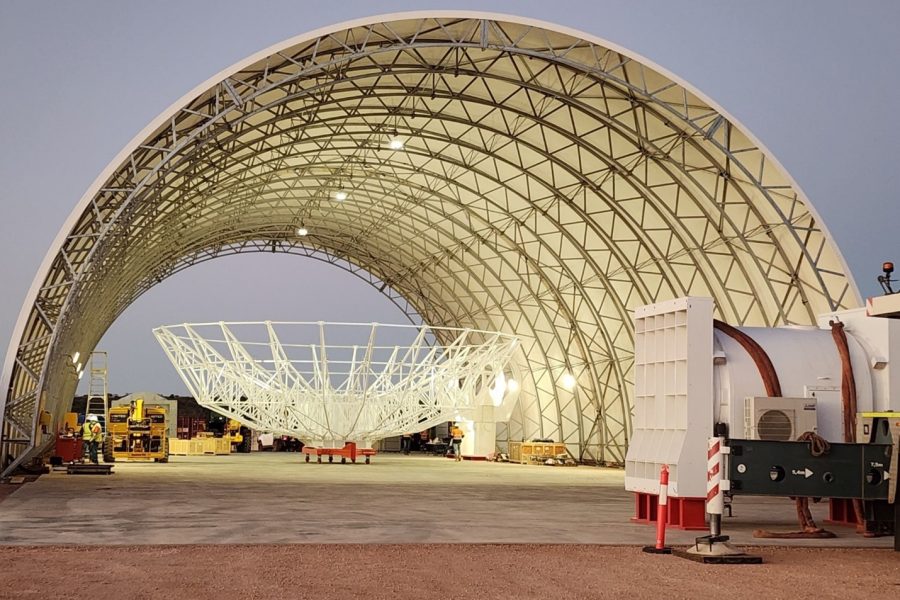The Space Force’s multinational project to build a new global radar network for safeguarding satellites from “malign activity” is taking shape, with the first facility in Australia now complete and set to go live by 2027.
This initiative known as the Deep-Space Advanced Radar Capability (DARC) is a joint effort between the U.S., United Kingdom, and Australia, to track objects up to 22,000 miles above Earth in geosynchronous orbit (GEO). The three nations agreed to construct radar sites in each country to maximize coverage.
The first facility, located in Exmouth, a port town in Western Australia, broke ground in October 2023. The service’s release noted that construction wrapped up three months ahead of schedule, with the site’s first antennas installed and the initial transmission test completed in September. More test activities are now underway, with full operations expected at the facility in 2027.

There are more than 500 active satellites in GEO, according to different sources. As space becomes increasingly contested, DARC aims to provide around-the-clock, all-weather surveillance to detect, identify, and characterize objects moving through GEO, such as space debris, to avoid collisions with both military and civilian satellites. The system also promises to detect any hostile actions that could disrupt operations.
In recent years, analysts and military leaders have increasingly sounded the alarm on space becoming a warfighting domain, as Russia and China have ramped up investment and developed new weapons. To counter that, Space Force leaders say they need more counter-space and domain awareness capabilities.
Lt. Col. Nicholas Yeung, chief of capabilities development for Space Systems Command’s International Affairs office, also cited the need for global partnerships, citing “emerging threats from adversaries and pacing challengers.” The DARC project aims to link the sites of the three partner nations, for shared data access and rapid responses to threats.

“The collaboration between all parties for the DARC project has been outstanding and is an example of what can be done when we work with our partners on a common goal for the advancement of Space Domain Awareness across our three nations,” said Michael Hunt, the Australian representative on the DARC steering committee.
Northrop Grumman is leading the charge in building DARC facilities. The company secured a $341 million contract with the U.S. Space Force in 2022 to build the first site in Australia and is scheduled to work on the second site in the U.K. under a $200 million deal signed last year. The U.K. Ministry of Defence has proposed building the installation at Cawdor Barracks, an old military base in Wales, for its strategic location and to extend its use beyond its planned closure in 2028.
Environmental assessments and town planning are underway for final approval. If all goes as planned, Northrop expects to wrap up the second DARC facility by February 2030.
“Alongside the United States and Australia, the United Kingdom will continue to take deliberate steps that ensure DARC enables a collective ability to operate decisively in space,” Commodore Dave Moody, head of Space Capability for U.K. Space Command said in the release. “DARC leverages the geography and commitment of key partner nations to deliver persistent, comprehensive space domain awareness.”
The third site will be set up somewhere in the continental U.S. once environmental and airspace assessments are completed. DARC is expected to be fully operational by 2032.
“DARC will ensure the U.S., its allies, and partners can effectively characterize the movement of objects traveling in, from and to space, allowing us to mitigate the risk of debris-causing events that could hold the world’s space-enabled capabilities at risk,” said Brig. Gen. Chandler Atwood, deputy commander of Space Operations Command. “Increased Space Domain Awareness will also bolster our vital ability to attribute malign activity from irresponsible actors in the space domain when and if necessary.”
